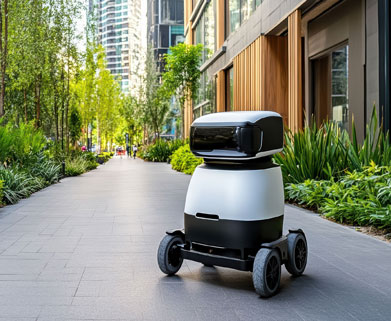China Robotaxi Market Growth and the Future of Urban Mobility

In recent years, China’s robotaxi market has become a major force in urban transportation. It is rapidly changing how people move in megacities and beyond. Valued at USD 4,379 million in 2024, this market is expected to grow to USD 120,190 million by 2030, achieving an impressive compound annual growth rate (CAGR) of 77.0%.
This remarkable growth reflects advancements in technology and strong government support, along with strategic partnerships that are driving a new era of autonomous mobility.
Driving Forces Behind China's Robotaxi Surge
Several key factors are fueling this growth. The Chinese government’s strong commitment to making the country a global leader in autonomous vehicle technology is crucial. By setting up pilot zones in major cities like Beijing, Shanghai, Guangzhou, and Shenzhen, the government has created a supportive environment for testing and expanding fully autonomous robotaxi services. These zones ensure strict safety standards and regulatory compliance, allowing companies to move confidently from experimentation to commercial deployment.
Technological innovation also plays a critical role. Breakthroughs in sensor systems, such as lidar, radar, and AI-driven software algorithms, have significantly improved the safety, reliability, and efficiency of autonomous vehicles. Companies like Baidu, with its Apollo Go service, have reached impressive milestones, covering over 100 million kilometers without major incidents. Meanwhile, Pony.ai and WeRide are rapidly growing their fleets and expanding their reach, highlighting the market's competitiveness and potential for growth.
Urban Mobility Transformed
Urban transportation makes up about 65% of the China robotaxi market share. This shows the significant potential of these autonomous vehicles to tackle the challenges of congested city streets and environmental issues. By offering a convenient, driverless option to traditional ride-hailing and personal vehicles, robotaxis help reduce traffic jams, lower emissions, and improve overall mobility. This not only helps daily commuters but also supports China’s broader sustainability goals aimed at carbon neutrality.
In addition to everyday city travel, airport transfers have become an important segment. Robotaxis at airports provide a controlled, high-traffic environment that is ideal for delivering reliable, on-demand services that fit flight schedules, enhancing the travel experience. Deployments in campuses and business parks, which account for about 10% of the market, further demonstrate robotaxis' versatility in regulating private and semi-closed transport settings.
Regional Expansion and Market Fragmentation
While major cities lead the adoption of robotaxi services, the market is rapidly expanding in various provinces. Beijing remains a key city, benefiting from government pilot zones and strong infrastructure, making it a top testing ground for fully driverless operations. Likewise, Shanghai uses its advanced infrastructure and international airports to scale robotaxi services.
In southern China, the Guangdong province, with cities like Guangzhou and Shenzhen, is becoming a vital hub, supported by key players like WeRide and a rich ecosystem of technology and automotive innovation.
Tier-2 cities such as Changsha in Hunan province and emerging regions like Hubei with Wuhan are advancing their robotaxi projects, showing that secondary cities are ready to embrace this new mobility. At the same time, tourism-focused provinces like Hainan are adopting robotaxi fleets to improve sustainable travel experiences, blending innovation with local economic needs.
Challenges in the Fast Lane
Despite the bright outlook, the China robotaxi market faces obstacles that could slow its growth. High costs related to research, development, and deployment remain significant. Each robotaxi's hardware, which includes lidar, radar, AI modules, and V2X communication units, substantially increases vehicle costs, often making them three to four times more expensive than standard electric vehicles.
Additionally, scaling fleet operations demands substantial investment in mapping infrastructure, cloud data management, monitoring centers, and maintenance facilities.
Cybersecurity threats and consumer concerns about safety and data privacy also pose ongoing challenges. Regulatory complexities are gradually being addressed, but require careful management, especially as permits for fully driverless vehicles become more common, still needing strict safety checks.
Looking Ahead
The future of the China robotaxi market looks promising. As autonomous technology continues to develop and costs decrease, robotaxi services are likely to become a regular part of urban transport. Expansion into tier-2 and tier-3 cities, better integration with public transit, and international market growth for Chinese companies will define the next stage of development. Leading companies such as Baidu, Pony.ai, and WeRide are not only growing their fleets—Baidu operates around 1,000 vehicles across 16 cities—but are also refining their business models to balance profitability, safety, and customer convenience. Changes in pricing strategies, combined with government subsidies and incentives, are expected to speed up broader consumer adoption.
In conclusion, China’s robotaxi market is setting a global example for autonomous vehicle deployment, showcasing a blend of cutting-edge technology, supportive policies, and growing urban demand. This surge in robotaxi adoption could reshape mobility trends and inspire similar markets around the world, ushering in a future where driverless vehicles redefine convenience, sustainability, and urban living.